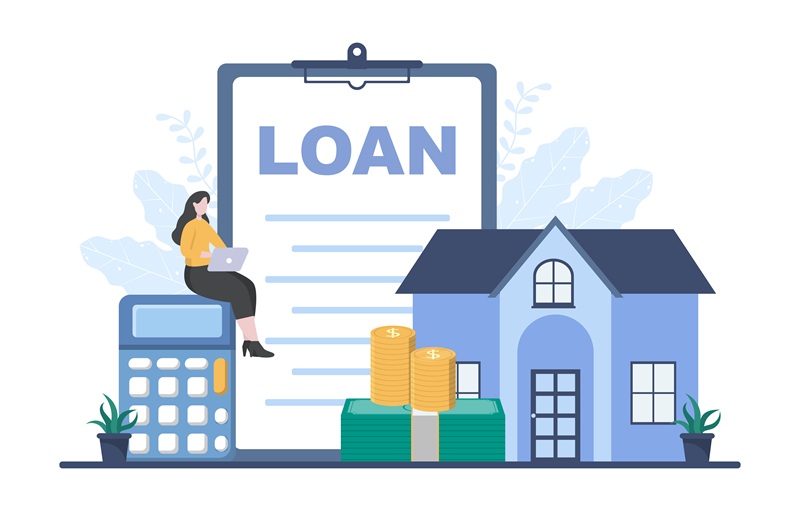

Did You Know?
We serve loans, the best way you can borrow

We serve loans, the best way you can borrow

Pre-EMI represents interest-only payments during construction phases before regular EMIs begin. Many borrowers feel stressed about managing rent while paying home loan EMIs simultaneously during property construction. Pre EMI meaning becomes clear when you realise it covers only interest portions of disbursed amounts.
Pre-EMI offers distinct characteristics that help borrowers during construction periods.
1. Lower Monthly Outflow: You pay only interest amounts rather than principal plus interest combinations during construction phases.
2. Flexible Payment Structure: Payments increase gradually as lenders disburse additional tranches based on construction milestones achieved.
3. Temporary Relief Period: This option provides breathing space for borrowers managing multiple financial commitments during property development.
4. Construction-Linked Disbursement: Loan amounts are released in stages matching construction progress rather than full upfront disbursement.
Several situations make pre-EMI advantageous for borrowers facing specific financial circumstances.
Pre EMI interest calculation formula helps borrowers plan their finances effectively during construction periods.
1. Identify Disbursed Amount: Determine the exact instant personal loan amount released by your lender for the construction phases.
2. Apply Interest Rate: Use your home loan interest rate divided by twelve for monthly calculations.
3. Calculate Monthly Interest: Multiply the disbursed amount by the monthly interest rate to get pre EMI interest.
4. Add Subsequent Disbursements: Include new disbursement amounts as construction progresses to updated calculations.
Here’s an example –
Pre-EMI provides several advantages for borrowers during property construction phases, helping them manage their finances better.
1. Reduced Financial Stress During Construction: You avoid paying hefty full EMIs while simultaneously managing rent and other living expenses during lengthy construction periods.
2. Better Cash Flow Management: Lower initial payments allow you to allocate funds for other investments or emergency expenses during construction phases.
3. Gradual Payment Increase: Payments rise slowly with each disbursement, allowing you to adjust your budget progressively rather than suddenly jump.
4. Investment Opportunities: Money saved from lower payments can generate returns through short-term investments or fixed deposits during construction.
5. Flexibility for Income Growth: The time gap between pre-EMI and full EMI allows salary increments to accommodate higher future payments naturally.
| Aspect | Pre-EMI | Full-EMI |
|---|---|---|
| Payment Structure | Only interest on disbursed amounts | Principal plus interest from the start |
| Monthly Outflow | Lower during the construction phase | Higher from loan commencement |
| Loan Tenure | Extended due to interest-only period | Standard tenure as per agreement |
| Total Interest Cost | Higher due to the extended payment period | Lower due to early principal reduction |
| Cash Flow Impact | Easier management during construction | Requires higher monthly budget allocation |
| Disbursement Method | Tranche-wise based on construction progress | The full amount or major portions upfront |
| Risk Factor | Construction delays increase total cost | Less exposure to project completion risks |
| Tax Benefits Timing | Deferred until possession of principal portion | Immediate benefits on both components are available |
| Payment Commencement | Starts with the first disbursement | Begins after full loan disbursement |
| Financial Planning | Requires adjustment for future EMI increases | Consistent payment amounts throughout the tenure |
| Prepayment Options | Limited to interest portions only | Full prepayment options are available immediately |
| Suitability | Best for cash flow management needs | Ideal for minimising total interest costs |
The tax implications of pre-EMI differ from regular EMI structures, which require careful planning for maximum benefits.
1. Interest Deduction Rules: Pre EMI interest paid during construction gets accumulated and claimed in five equal installments after possession under Section 24.
2. Principal Component Benefits: Since pre-EMI covers only interest, you cannot claim Section 80C deductions until regular EMI payments begin.
3. Possession Year Advantage: All accumulated interest from the construction period becomes eligible for tax benefits once you take possession of the property.
4. Documentation Requirements: Maintain proper records of all pre-EMI payments made during construction for claiming deductions later effectively.
Most lenders allow switching from pre-EMI to full EMI during construction phases. This change helps reduce the total interest burden significantly. You need to inform your lender formally about this decision. Some banks may charge conversion fees for making this switch. Check your loan agreement terms before requesting this change.
Pre-EMI calculation uses a simple interest formula on disbursed loan amounts only. Multiply the disbursed amount by the annual interest rate, then divide by twelve months. Add subsequent disbursements to increase your monthly payment accordingly. Use the EMI calculator. You can get pre EMI interest calculator tools for accurate computations.
Missing pre-EMI payments triggers penalty charges and damages your credit score significantly. Banks report defaults to credit bureaus, affecting future loan eligibility. Late payment fees depend on lender policies. Your loan account gets marked as irregular, impacting creditworthiness. Always maintain timely payments to avoid these consequences.
Pre EMI vs full EMI choice depends on your financial situation and goals completely. Choose pre-EMI if you need lower initial payments and better cash flow management. Select full EMI if you want to minimise total interest costs and shorter loan tenure. Consider your income stability and other financial commitments before deciding. Both options have distinct advantages for different borrower profiles.
Pre-EMI charges represent interest-only payments on disbursed loan amounts during construction periods. These charges increase with each tranche released by your lender. Banks calculate these charges monthly based on outstanding disbursed amounts. No principal reduction happens during this phase. Charges continue until construction completion and possession. Understanding these charges helps better financial planning.
Yes, you can claim pre-EMI interest for tax deductions under Income Tax Act provisions. Interest paid during construction gets accumulated and claimed in five equal yearly instalments. Claims begin from the financial year you take property possession. The maximum deduction limit remains ₹2 lakhs annually for self-occupied properties. Maintain proper payment records to claim these benefits successfully.
Education loan pre-EMI works similarly, covering only interest during study periods. Students pay interest while completing their courses without principal repayment obligations. This reduces the financial burden on families during the education phases. Full EMI begins after course completion or employment commencement. Many banks offer moratorium periods, extending this benefit further for graduates.
Download our personal loan app to apply for a personal loan. Get up to 2Lakhs* as a personal loan. Download Now!
Sign into avail a personal loan up to ₹ 2,50,000
Register to avail an instant loan in just a few minutes. Fulfil your financial needs with our loan and repay in easy EMIs.
Apply NowUnifinz Capital India Limited is a Non Banking Finance Company (NBFC) registered with the Reserve Bank of India (RBI). lendingplate is the brand name under which the company conducts its lending operations and specialises in meeting customer’s instant financial needs.
Corporate Identity No. (CIN)
L 1 7 1 1 1 D L 1 9 8 2 P L C 0 1 3 7 9 0
RBI Certificate of Registration No (CoR):
1 4 . 0 0 2 3 3
Registered Office :
Rajlok Building (Floor-5), 24 Nehru Place, New Delhi-110 019